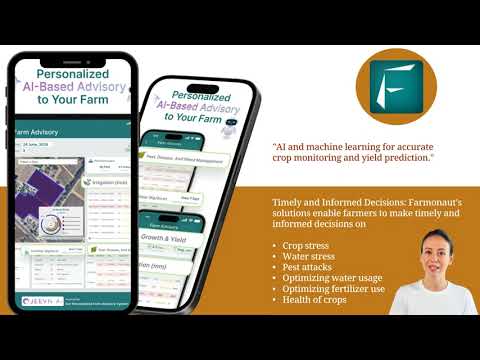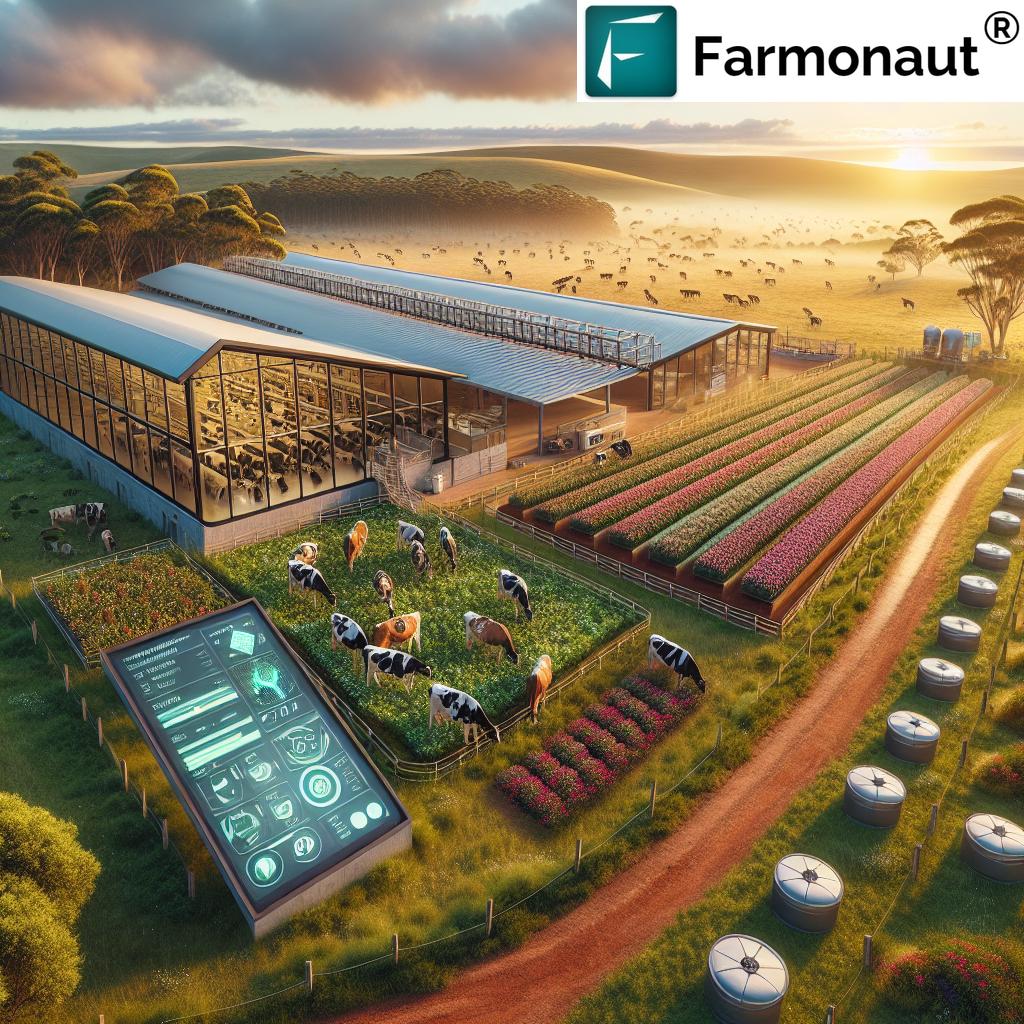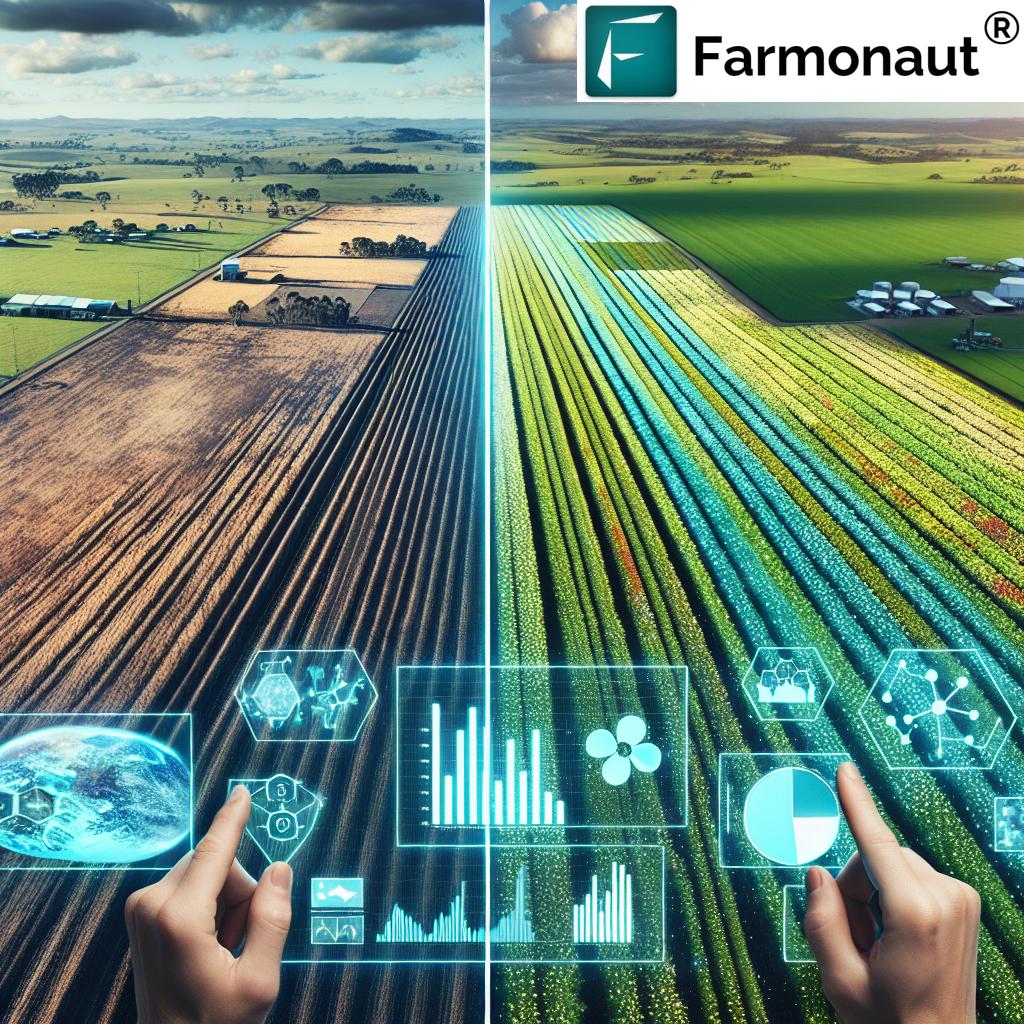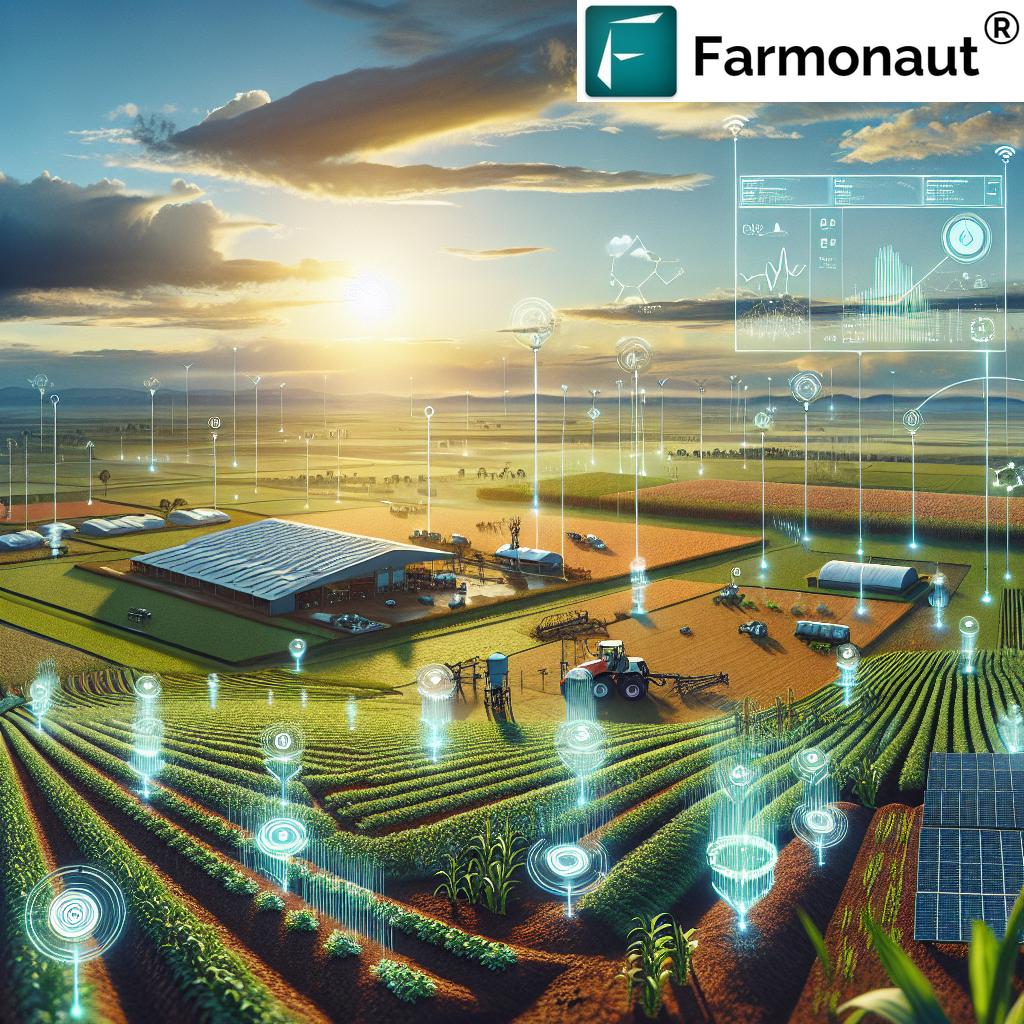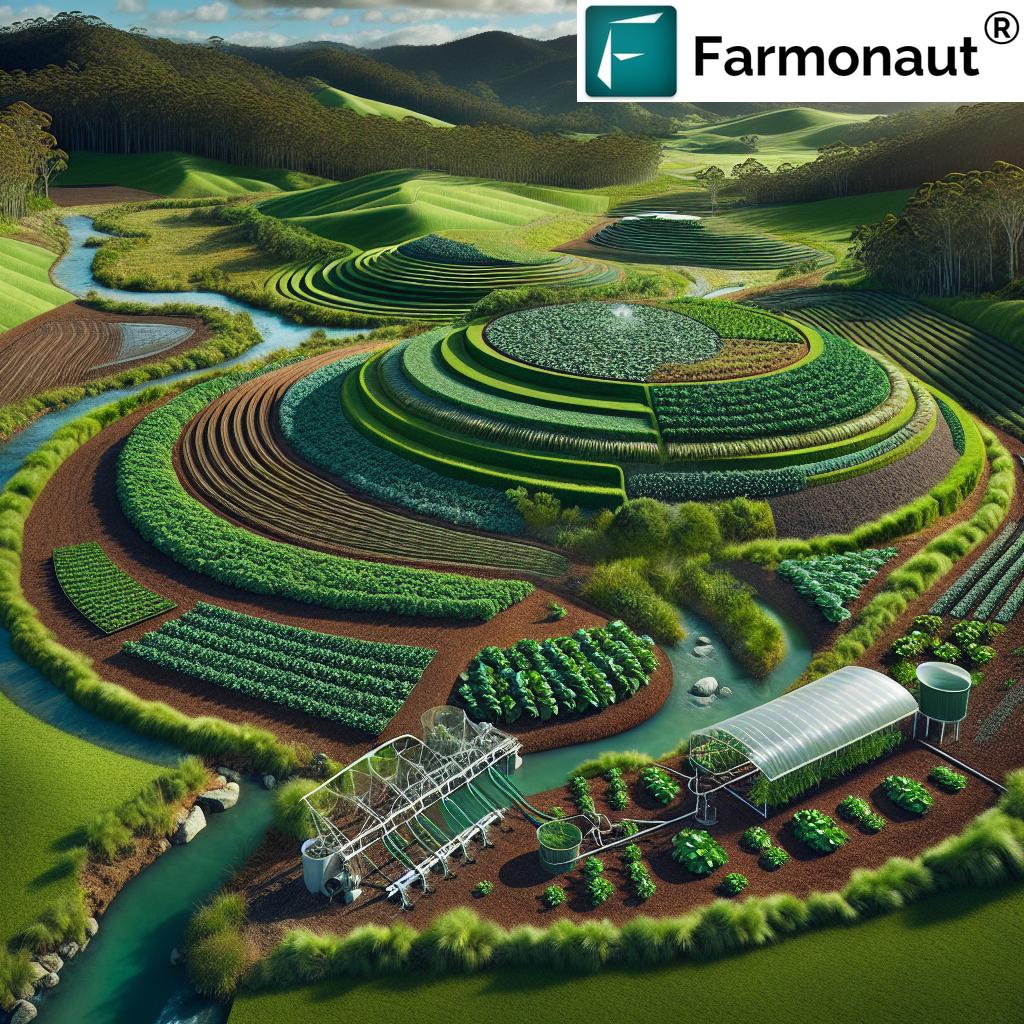Revolutionize Your South Australia Farm: Precision Agriculture Technology for Smarter Decision-Making
“A 3,700-acre mixed cropping enterprise in South Australia transformed its operations using precision agriculture technology.”
In the heart of South Australia’s agricultural landscape, a revolution is taking place. Precision agriculture technology and farm management software are transforming the way we approach crop planning and decision-making processes. As we delve into this insightful exploration, we’ll uncover how cutting-edge digital platforms are reshaping the future of farming, particularly for a 3,700-acre mixed cropping enterprise in South Australia.
The transition from legacy systems to integrated farm planning solutions has opened up a world of possibilities for growers. Real-time agricultural data collection, financial tracking, and agronomic recommendations are now at their fingertips, empowering them to make informed decisions that can significantly impact their bottom line.
The Power of Precision Agriculture Technology
Precision agriculture technology is not just a buzzword; it’s a game-changer for modern farming. By harnessing the power of data, satellite imagery, and advanced analytics, farmers can now make decisions with unprecedented accuracy and efficiency.

Let’s explore some key components of precision agriculture technology:
- Satellite-Based Crop Monitoring: Real-time insights into crop health, vegetation indices, and soil moisture levels.
- AI-Driven Advisory Systems: Personalized recommendations based on data analysis and machine learning algorithms.
- Weather-Responsive Farming Strategies: Proactive planning based on accurate weather forecasts and historical data.
- Digital Record-Keeping: Seamless tracking of farm operations, inputs, and yields.
These technologies work in synergy to provide a comprehensive farm management solution that can dramatically improve operational efficiency and crop performance.
Transforming Farm Management with Digital Solutions
The shift from traditional farming methods to precision agriculture is akin to moving from paper maps to GPS navigation. It’s a quantum leap in terms of accuracy, efficiency, and decision-making capabilities.
Here’s how digital solutions are revolutionizing farm management:
- Data-Driven Decision Making: Access to real-time data allows for informed choices on planting, irrigation, and harvesting.
- Financial Tracking: Integrated systems provide a clear picture of costs and potential returns, enabling better financial planning.
- Agronomic Insights: Advanced platforms offer tailored recommendations based on crop types, soil conditions, and local climate.
- Operational Efficiency: Streamlined processes and automated record-keeping save time and reduce errors.
By leveraging these digital tools, farmers can optimize their resources, reduce waste, and ultimately increase their profitability.
Real-Time Agricultural Data Collection: A Game-Changer
One of the most significant advantages of precision agriculture technology is the ability to collect and analyze data in real-time. This capability transforms how farmers monitor their crops and make decisions throughout the growing season.
“Real-time agricultural data collection and weather-responsive farming strategies can significantly improve crop performance and profitability.”
Let’s break down the benefits of real-time data collection:
- Immediate Insights: Farmers can spot issues like pest infestations or nutrient deficiencies as they arise.
- Proactive Management: Early detection allows for timely interventions, potentially saving entire crops.
- Resource Optimization: Precise data on soil moisture and crop health enables targeted irrigation and fertilizer application.
- Yield Predictions: Accurate forecasting helps in planning harvests and managing supply chains more effectively.
With real-time data at their fingertips, farmers can make swift, informed decisions that can have a significant impact on their crop yields and overall farm performance.
Weather-Responsive Farming: Adapting to Nature’s Rhythms
In South Australia, where weather patterns can be unpredictable, the ability to respond quickly to changing conditions is crucial. Weather-responsive farming strategies, enabled by precision agriculture technology, allow farmers to adapt their plans based on accurate, up-to-date weather information.
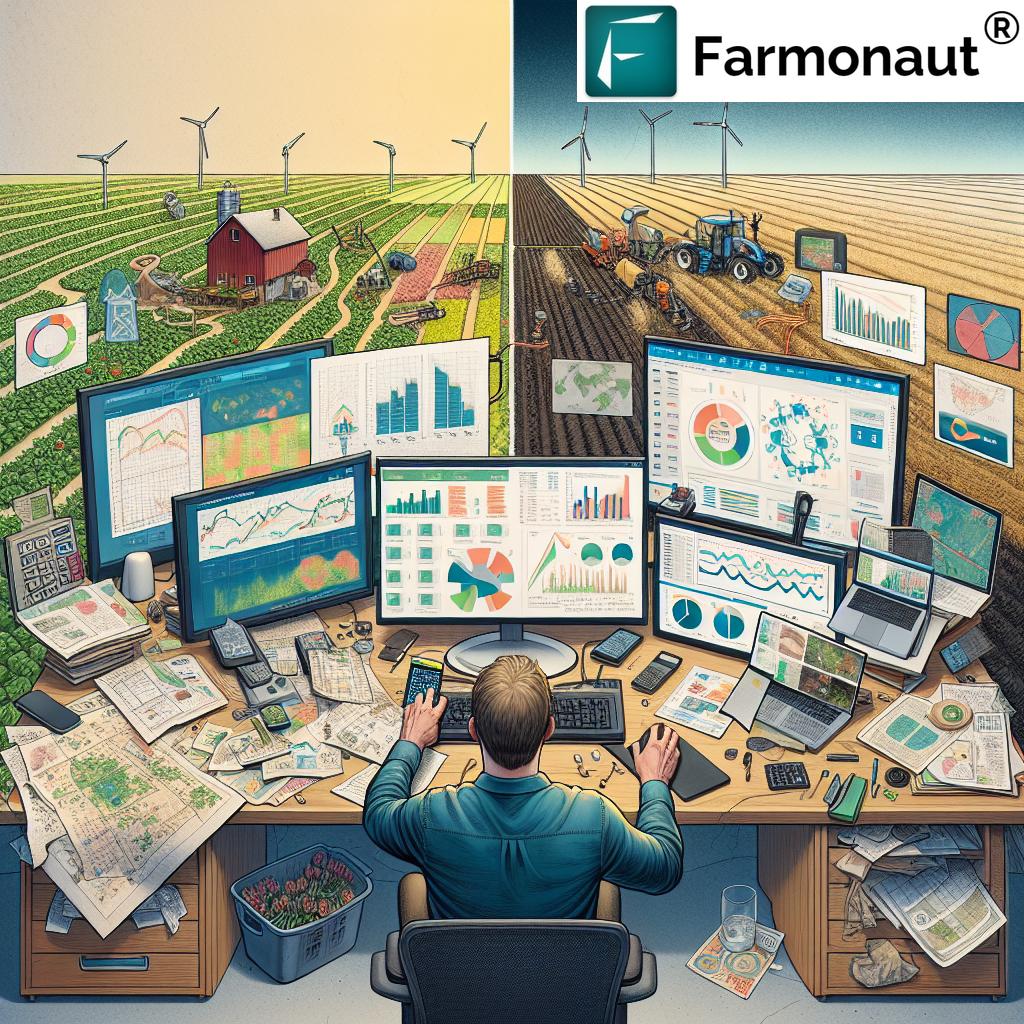
Key aspects of weather-responsive farming include:
- Precise Weather Forecasts: Localized predictions help in planning daily farm activities.
- Historical Weather Data Analysis: Identifying patterns to make informed decisions about crop rotations and planting times.
- Automated Alerts: Notifications about impending weather events that may affect crops.
- Integration with Farm Management Systems: Weather data directly informs scheduling and resource allocation.
By aligning farming practices with weather patterns, growers can minimize risks and maximize the potential of their crops.
Financial Tracking: The Backbone of Farm Profitability
In the competitive world of agriculture, financial acumen is just as important as agronomic expertise. Precision agriculture platforms often include robust financial tracking tools that provide a clear picture of a farm’s economic health.
Benefits of integrated financial tracking systems:
- Real-Time Cost Analysis: Monitor expenses as they occur, allowing for immediate adjustments.
- Profit Forecasting: Predict potential returns based on current market prices and expected yields.
- Budget Planning: Create detailed budgets for different crops and fields.
- Performance Metrics: Compare actual results with projections to refine future strategies.
With these financial insights, farmers can make data-driven decisions that enhance their profitability and ensure long-term sustainability.
Agronomic Recommendations: Tailored Advice for Optimal Growth
One of the most valuable features of advanced farm management platforms is their ability to provide personalized agronomic recommendations. These insights are based on a combination of real-time data, historical information, and expert knowledge.
Key areas where agronomic recommendations make a difference:
- Crop Selection: Suggestions for ideal crop types based on soil conditions and market trends.
- Nutrient Management: Precise fertilizer recommendations to optimize plant growth and minimize waste.
- Pest and Disease Control: Early warning systems and targeted treatment advice.
- Irrigation Scheduling: Optimal watering plans based on crop needs and weather forecasts.
By following these tailored recommendations, farmers can improve crop quality, increase yields, and reduce the environmental impact of their operations.
Seamless Information Sharing: Bridging the Gap Between Farm and Expert
In the past, communication between farmers and agronomists often involved time-consuming site visits and manual data sharing. Today’s precision agriculture platforms facilitate instant, seamless information sharing, allowing for more timely and effective collaboration.
Advantages of improved information sharing:
- Real-Time Consultations: Agronomists can provide immediate advice based on current farm data.
- Remote Monitoring: Experts can track crop progress and identify issues without physical visits.
- Collaborative Decision-Making: Farmers and advisors can work together using shared data and insights.
- Knowledge Transfer: Easy sharing of best practices and successful strategies across farming networks.
This level of connectivity ensures that farmers have access to expert knowledge whenever they need it, leading to better-informed decisions and improved farm management.
Precision Agriculture Technology: A Comparative Analysis
To fully appreciate the impact of precision agriculture technology, let’s compare it with traditional farming methods across various aspects:
| Aspect | Traditional Farming | Precision Agriculture Technology |
|---|---|---|
| Data Collection | Manual, periodic | Real-time, continuous |
| Decision-Making Process | Intuition-based | Data-driven |
| Weather Responsiveness | Limited | Proactive |
| Financial Tracking | Periodic | Continuous |
| Information Sharing | Siloed | Seamless |
| Crop Performance Monitoring | Periodic | Continuous |
| Operational Efficiency | Baseline | Estimated 20-30% improvement |
| Profitability | Baseline | Estimated 10-15% increase |
This comparison clearly illustrates the significant advantages that precision agriculture technology brings to modern farming operations.
Implementing Precision Agriculture: Steps to Success
For farmers looking to adopt precision agriculture technology, a structured approach can help ensure a smooth transition. Here are the key steps to implementing these advanced systems:
- Assessment: Evaluate your current farming practices and identify areas for improvement.
- Goal Setting: Define clear objectives for what you want to achieve with precision agriculture.
- Technology Selection: Choose the right tools and platforms that align with your farm’s needs and goals.
- Data Integration: Consolidate existing farm data into the new system.
- Training: Ensure all staff are properly trained on using the new technology.
- Phased Implementation: Start with a pilot program before rolling out across the entire farm.
- Continuous Monitoring: Regularly assess the performance and ROI of your precision agriculture system.
- Iterative Improvement: Continuously refine your approach based on results and new technological advancements.
By following these steps, farmers can maximize the benefits of precision agriculture technology and set their operations up for long-term success.
The Future of Farming: Embracing Innovation
As we look to the future, it’s clear that precision agriculture technology will play an increasingly important role in farming. The integration of artificial intelligence, machine learning, and Internet of Things (IoT) devices promises even greater advancements in farm management and decision-making.
Emerging trends in precision agriculture:
- Autonomous Machinery: Self-driving tractors and drones for planting, monitoring, and harvesting.
- Predictive Analytics: Advanced algorithms to forecast crop yields and market trends with greater accuracy.
- Blockchain for Traceability: Ensuring transparency and security in the agricultural supply chain.
- Precision Livestock Farming: Applying similar technologies to animal husbandry for improved health and productivity.
By staying abreast of these innovations and being willing to adapt, farmers can position themselves at the forefront of agricultural excellence.
Overcoming Challenges in Adopting Precision Agriculture
While the benefits of precision agriculture are clear, there can be challenges in its adoption. Understanding and addressing these challenges is crucial for successful implementation.
Common challenges and solutions:
- Initial Cost: Start with essential technologies and scale up gradually.
- Learning Curve: Invest in comprehensive training programs for farm staff.
- Data Management: Choose user-friendly platforms with robust data security features.
- Connectivity Issues: Explore satellite or mesh network solutions for remote areas.
- Integration with Existing Systems: Opt for platforms that offer API integration capabilities.
By proactively addressing these challenges, farmers can smooth the transition to precision agriculture and reap its full benefits.
Case Study: South Australia’s 3,700-acre Mixed Cropping Enterprise
Let’s take a closer look at how precision agriculture technology transformed operations on a 3,700-acre mixed cropping enterprise in South Australia. This farm, which previously relied on traditional methods, embraced a comprehensive digital platform to revolutionize its approach to crop management.
Key transformations:
- Data-Driven Crop Rotation: Optimized crop selection based on soil health data and market projections.
- Precision Irrigation: Reduced water usage by 20% through targeted application based on real-time soil moisture data.
- Variable Rate Technology: Achieved 15% reduction in fertilizer use while maintaining yield levels.
- Weather-Informed Decision Making: Improved timing of planting and harvesting, resulting in a 10% increase in overall yield.
- Financial Performance: Realized a 12% increase in profitability through better resource management and increased yields.
This case study demonstrates the tangible benefits that precision agriculture technology can bring to a large-scale farming operation in South Australia.
Integrating Precision Agriculture with Sustainable Farming Practices
One of the most exciting aspects of precision agriculture is its potential to enhance sustainability in farming. By optimizing resource use and minimizing waste, these technologies align perfectly with environmental conservation efforts.
Sustainable farming practices enhanced by precision agriculture:
- Reduced Chemical Use: Targeted application of pesticides and herbicides minimizes environmental impact.
- Water Conservation: Precision irrigation systems significantly reduce water waste.
- Soil Health Management: Data-driven crop rotation and nutrient management improve long-term soil fertility.
- Carbon Footprint Reduction: Optimized machinery use and reduced inputs lower overall carbon emissions.
By embracing precision agriculture, farmers can not only improve their productivity but also become stewards of environmental sustainability.
The Role of Government and Industry Support
The successful adoption of precision agriculture technology often requires support from both government and industry bodies. In South Australia, various initiatives are in place to encourage and facilitate the transition to precision farming methods.
Support mechanisms include:
- Grants and Subsidies: Financial assistance for farmers investing in precision agriculture technology.
- Education Programs: Workshops and training sessions on the latest farming technologies.
- Research Partnerships: Collaboration between universities, government agencies, and farmers to develop and test new technologies.
- Infrastructure Development: Improving rural internet connectivity to support digital farming practices.
These support systems play a crucial role in accelerating the adoption of precision agriculture across the region.
Measuring Success: KPIs for Precision Agriculture
To truly understand the impact of precision agriculture technology, it’s important to establish and track key performance indicators (KPIs). These metrics help farmers quantify the benefits and identify areas for further improvement.
Essential KPIs for precision agriculture:
- Yield per Hectare: Measure improvements in crop productivity.
- Input Efficiency: Track reductions in water, fertilizer, and pesticide use.
- Soil Health Indicators: Monitor long-term changes in soil quality and fertility.
- Profitability per Crop: Assess the financial impact of precision farming techniques.
- Energy Efficiency: Evaluate reductions in fuel consumption and overall energy use.
- Labor Productivity: Measure improvements in workforce efficiency.
By regularly assessing these KPIs, farmers can continuously refine their precision agriculture strategies for optimal results.
Conclusion: Embracing the Future of Farming
As we’ve explored throughout this blog post, precision agriculture technology is revolutionizing farming practices, particularly in South Australia. From real-time data collection to weather-responsive strategies and integrated financial tracking, these advanced tools are empowering farmers to make smarter, more informed decisions.
The transformation of the 3,700-acre mixed cropping enterprise serves as a powerful example of what’s possible when traditional farming meets cutting-edge technology. By embracing these innovations, farmers can not only improve their operational efficiency and crop performance but also contribute to more sustainable and environmentally friendly agricultural practices.
As we look to the future, it’s clear that precision agriculture will play an increasingly vital role in feeding a growing global population while preserving our planet’s resources. For farmers in South Australia and beyond, the message is clear: the future of farming is here, and it’s digital, data-driven, and more precise than ever before.
FAQs
- What is precision agriculture technology?
Precision agriculture technology refers to the use of advanced digital tools, satellite imagery, and data analytics to optimize farming practices, improve crop yields, and enhance resource efficiency. - How does real-time data collection benefit farmers?
Real-time data collection allows farmers to monitor crop health, soil conditions, and weather patterns continuously, enabling them to make timely decisions and interventions to optimize crop growth and prevent potential issues. - What are the main components of a farm management software system?
Key components typically include crop monitoring tools, financial tracking modules, weather forecasting integration, agronomic recommendation engines, and data analytics capabilities. - How can precision agriculture improve sustainability in farming?
Precision agriculture enhances sustainability by optimizing resource use, reducing chemical inputs, conserving water through targeted irrigation, and improving soil health through data-driven management practices. - What are the challenges in adopting precision agriculture technology?
Common challenges include initial investment costs, the learning curve for new technologies, data management complexities, and potential connectivity issues in rural areas.
Ready to revolutionize your farming practices? Explore Farmonaut’s advanced agricultural solutions:
Web App | API | API Developer Docs






